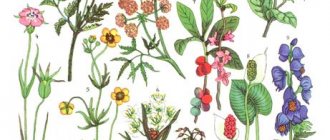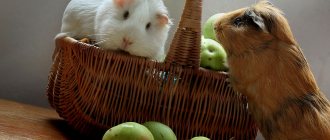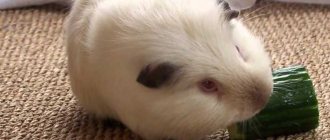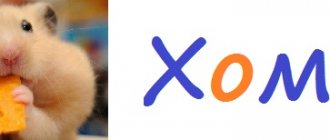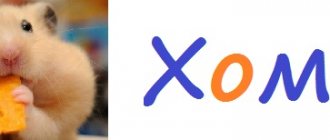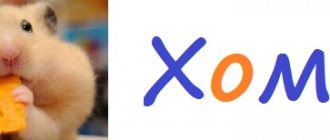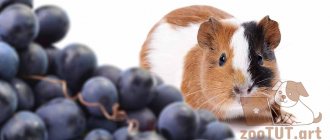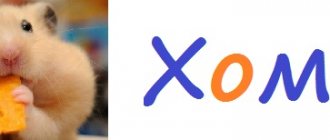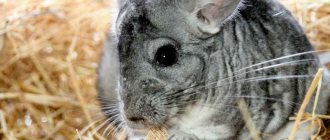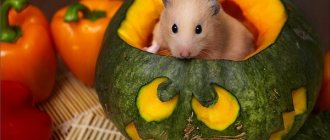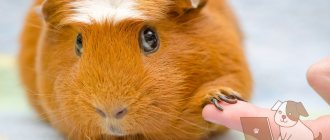Animals require vitamins for full, harmonious development and growth, for good body resistance to many diseases. The guinea pig is no exception in this matter. If animals living in their natural environment independently take care of finding useful substances for themselves, then pets have to rely on the owner for this. If a rodent's body does not have sufficient quantities of certain substances, its health condition may deteriorate significantly, and various diseases may develop, including serious ones, including growth retardation or infertility. All this can be avoided if all the necessary elements are present in your pet’s diet. The most important among them, vitally important, is ascorbic acid or vitamin C.
Vitamin C
If the animal lives in nature, its body has a special enzyme that is responsible for converting glucose into vitamin C. If the guinea pig is a pet, then it does not have this enzyme. That is, a pet cannot produce ascorbic acid on its own.
In this regard, the owner must constantly ensure that the animal’s diet is structured in such a way that there is enough of this vitamin in the food, and also give it additional preparations containing the vitamin. If there is not enough ascorbic acid, the animal may develop scurvy and other serious diseases that can even cause death.
It is necessary to ensure that the guinea pig receives a sufficient amount of vitamins year-round. In the spring-summer season, this may include eating fresh foods. Among them: vegetables, fruits, salads and herbs.
In winter, you can buy special preparations and add them to the feed, or buy specialized fortified feed. It is also worth mentioning in advance that there are certain groups of animals that need increased consumption of vitamins all year round. They can be added to food regardless of the time of year. These are baby guinea pigs, pregnant and lactating females, animals during illness and immediately after it.
Fish fat
If there is a nutrient that modern diets (outside of a handful) cannot achieve in sufficient quantities
people who eat a lot of fatty fish) is fish oil.
Fish oil is the hottest supplement today, and companies are investing a lot of money in research, so the research base has accumulated large. Omega-3 fatty acids normalize metabolism, protect the heart, help fats oxidize more vigorously, and help control inflammation. It's easier to list what fish oil doesn't do.
If you cannot or do not want to eat fatty fish (salmon, mackerel, herring, etc.) up to 5 times a week, then try taking fish oil supplements, choosing companies that ensure high-quality purification of heavy metals from it.
Flaxseed oil is commonly suggested as an omega-3 alternative to fish oil. However, the body's conversion of flaxseed omega-3 into EPA/DHA is very inefficient in most people. In addition, flaxseed oil oxidizes very quickly and becomes almost harmful. The average recommendation for athletes for EPA / DHA is 1.8-3.0 g per day.
What foods contain a lot of vitamin C?
Ascorbic acid is found in a lot of foods. To ensure that your rodent has enough ascorbic acid, do not forget to give him broccoli and other types of cabbage, basil, raspberry, burdock and nettle leaves, kiwi, currant branches, mint, bell pepper and tomato, dandelion, fennel, branches of coniferous plants, apples. But it is important to provide products that are grown far from highways, roads and enterprises. You also need to be sure that they were not treated with any chemicals. It is best to produce fruits and plants from your own garden, since in industrial production it is rarely possible to do without chemicals, and they can be detrimental to the health of a guinea pig.
If you give all these products in sufficient quantities to the rodent, you will not need to use additional drugs. Even in winter, you can grow greens on the windowsill or use apples, cabbage and other vegetables and fruits harvested in the fall. If you do not have this opportunity, you will have to resort to synthetic vitamin supplements.
About the benefits of succulent feed
Nettle
Common stinging nettle has a number of beneficial properties and vitamins. It contains a lot of vitamin C, carotene, B vitamins and carotene. Fresh or dried nettle is a good natural vitamin concentrate. Young nettle leaves are also rich in protein, starch, chlorophyll, carbohydrates and iron salts, potassium and copper, manganese and titanium, nickel, many types of tannins and organic acids. Another advantage of nettle is that it is nutritious. Nettle leaves and shoots contain a large amount of proteins, fiber, and fats.
Many breeders dry nettles to prevent vitamin deficiency in guinea pigs at the end of winter.
The leaves can be fed whole, or they can be made into powder and added to the main grain or concentrated feed. It is best to harvest nettles before flowering begins. Young shoots are mowed or only leaves are collected. Dry without pre-washing in a well-ventilated area, but out of direct sunlight.
Dandelion
This common and familiar plant is very useful for guinea pigs and in the summer it must be included in the animal’s diet. The leaves and roots of the plant are fed. Dandelion leaves are very rich in carotenoids, vitamin C, vitamins B and P. Dandelion leaves are good to use to improve digestion in animals, as well as to increase appetite. Dandelion roots are rich in sugar, inulin, and malic acid.
Spinach
Young spinach leaves are suitable for feeding. Spinach is also a source of large amounts of vitamins and proteins, iron salts, calcium and phosphorus. Just one hundred grams of spinach contains more than 700 mg of potassium.
Spinach can be fed not only fresh, but also dried and even frozen.
Cabbage
Headed cabbage is suitable for feeding fresh. Red cabbage is considered more nutritious and rich in vitamins. White and red cabbage is rich in vitamins C, carotene, B vitamins and iodine, pantothenic acid and many salts important for animal health. However, do not forget that cabbage leaves cause fermentation and gas formation in the intestines, so it is not recommended to feed a lot of cabbage leaves per day. Brussels sprouts can also be used to feed guinea pigs. It is rich in ascorbic acid, proteins, carotene, vitamins and salts of sodium, phosphorus and iron, as well as iodine and potassium.
Cauliflower is a valuable source of vitamins B and P; it is especially recommended to feed it to pregnant guinea pigs, as well as to females during lactation and young animals.
Broccoli is also suitable for feeding. This type of cabbage is nutritious and high in sugar, carotenes, choline, and methionine. Broccoli is very rich in calcium. A big plus of broccoli is that it can be frozen and fed even in winter.
Lettuce leaves
Lettuce is a favorite food of guinea pigs. Regular leaf lettuce sprouts quite quickly and forms rosettes, so many breeders even grow it in pots at home. Lettuce leaves are rich in sugar and metals important for the guinea pig’s body:
Lettuce leaves contain almost all known vitamins and folic acid. Regular feeding of lettuce helps improve digestion and has a good effect on the pig's metabolism and appearance.
Parsley and dill
Our usual parsley and dill are high in vitamin C and carotene. Dill is especially recommended for guinea pigs during pregnancy and nursing. Dill not only increases milk production, but also improves the nutritional quality of milk. It is recommended to feed parsley to young animals and guinea pigs during the molting period, as well as after illness.
Ascorbic acid in ampoules
In winter, the amount of nutrients in the diet decreases sharply, so it is necessary to strengthen the health of the rodent with the help of synthetic drugs. It is easier to use vitamin C in liquid form; it is sold in ampoules and is a five percent solution. It is easier to give than powder or tablets, which additionally need to be diluted in water. There is no need to dilute the vitamin in the ampoule; it is ready for use. A guinea pig needs 0.5 ml per day. They can be administered carefully using an insulin syringe without a needle.
Nutrition for pregnant pigs and newborn piglets
Pregnant pets must eat well and of high quality. The diet of furry mothers should be rich in proteins and vitamins. It is useful to give pregnant females carrots, beets, and wheat sprouts. You can periodically add a little milk to the water. Rosehip infusion brings great benefits to the body of a pregnant pig.
If the female who gave birth does not have milk, then the owner will have to feed the cubs on his own using a syringe. Artificial food for small piglets includes low-fat cream and the probiotic Linex. The cream is taken into the syringe and a tenth of the probiotic capsule is added to it. The resulting solution is nutritious and beneficial for the digestive system of babies. The food in the syringe is warmed to room temperature. Piglets take 1 ml of food every hour. Two-week-old babies can be switched to cereal porridge without milk. The piglets sit on the porridge until they get used to “adult” food.
How to Give Vitamin C to a Guinea Pig
The daily norm for an animal is 0.5 ml. But this is an average value and is only suitable for a healthy adult. To calculate the dosage more accurately, you need to know the norm for healthy and sick animals. For the former it is 10-30 mg per kilogram, for the latter – 30-50 mg. Giving more vitamins than prescribed is also not worth it, since an overabundance can also undermine your health.
If everything is clear with the intake of vitamins along with food, then how to introduce synthetic drugs into the diet. You can give an ascorbic acid tablet as a separate treat. If the animal is accustomed to sour taste, the taste of the tablet will seem absolutely normal to it. If you purchase the vitamin in powder form, you can mix it with the food. The form in the ampoule is forced into the root of the tongue.
Abuse of synthetic vitamins
Vitamin C is vital for guinea pigs, but it is preferable to give it in organic form, that is, in food. If you neglect these rules and give pharmaceutical drugs all year round instead of fruits and vegetables, the animal may develop a malignant tumor. The reason is that synthetics are not processed by the body and accumulate in it. The solution is to make taking medications an exclusively seasonal occurrence and try to meet your vitamin needs as much as possible through foods.
Basic information
Guinea pig
is a herbivore. She has difficulty digesting soft foods that are low in fiber. Constantly consuming such foods, the animal may suffer from indigestion. Solid food helps animals wear down their teeth. Veterinarians warn that the diet should be changed gradually. A sudden change will also lead to problems with the digestive system. You must be confident in the quality of the products.
Always have food in the cage. An interesting fact is that in order to maintain the necessary intestinal flora, pigs eat their own droppings. It is not advisable for pets to choose their favorite foods and leave the rest in the feeder.
